SYMBIOTIC SENSE(S)
RIXC ART SCIENCE FESTIVAL
When
Festival exhibitions: October 23 – December 7, 2024.
Where
National Library of Latvia / RIXC Gallery / Riga, Latvia
Library: Mon-Fri 11-19, Sat 10-17 / RIXC: Wed-Sat 12-18
ABOUT
This year's RIXC Art Science festival with the title Symbiotic Sense(s), positioned at the intersection of symbiotic art aesthetics and visionary scientific paradigms, aims to embrace symbiotic thinking, inspiring cultural conversations on collaboration and fostering collective action towards a more symbiotic future.
The festival features the Symbiotic Sense(s) exhibition at the National Library of Latvia and the Deep Sensing exhibition by Rasa Smite and Raitis Smits at the RIXC Gallery on view until December 7, 2024.
EVENTS
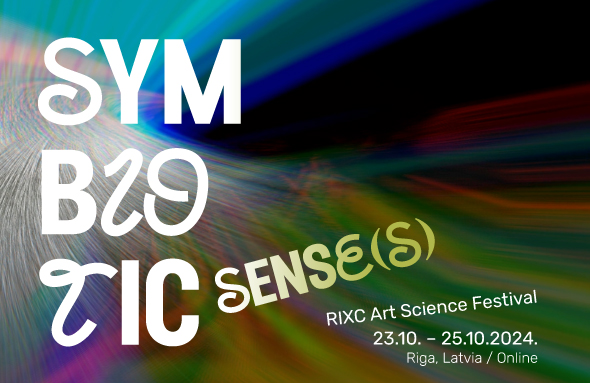
,
Focusing on symbiotic senses as a key perspective, this year’s festival will explore its relation to extended cognition and collective intelligence ideas, calling for the urgent need for new visions, artistic and utopian projects in cultural evolution. The idea posits that symbiosis defines our existence, highlighting our complete interdependence on our environment and planetary system.
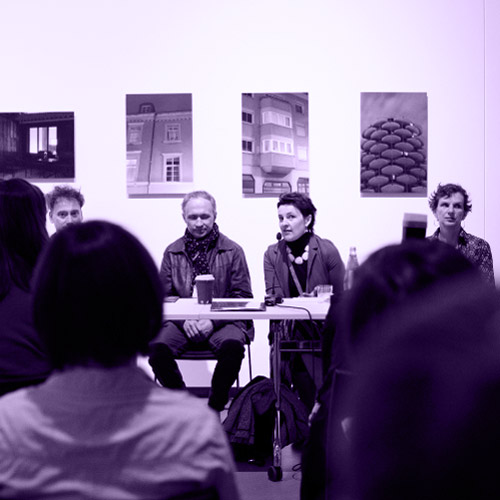
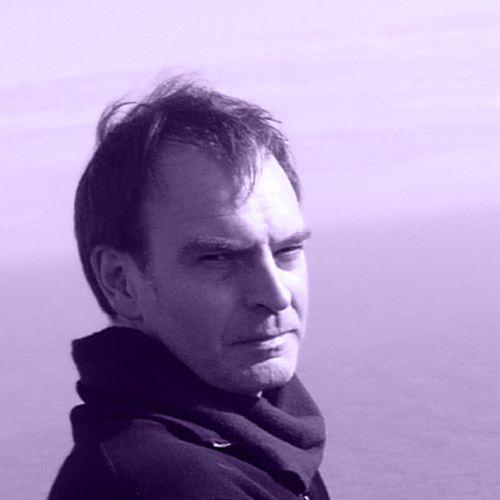
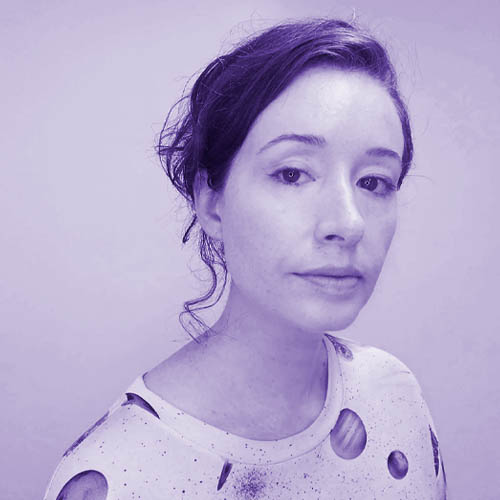
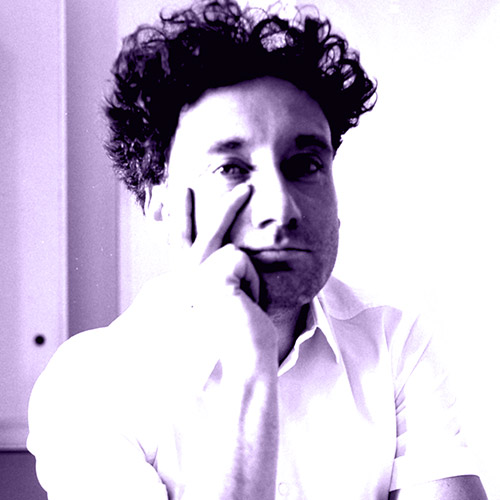
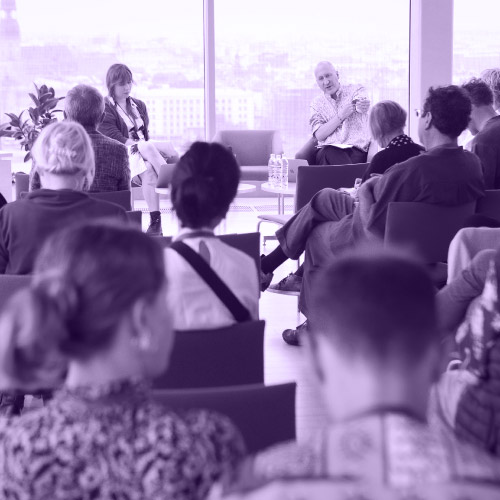
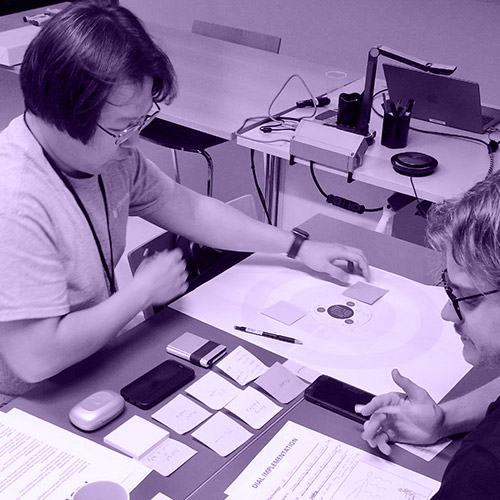
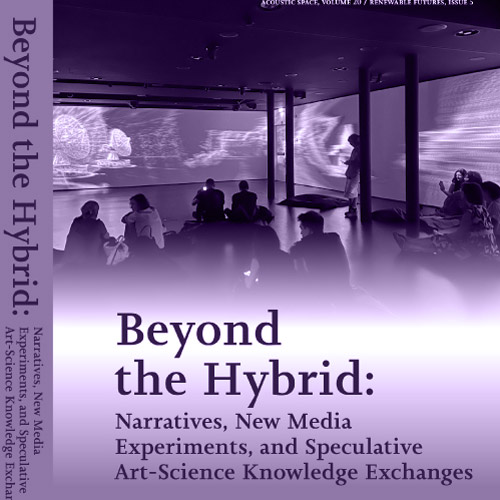
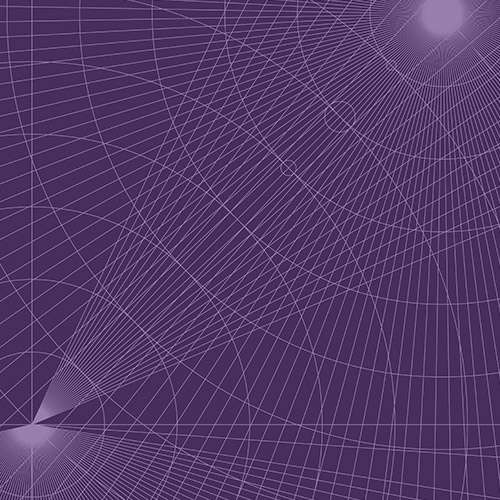

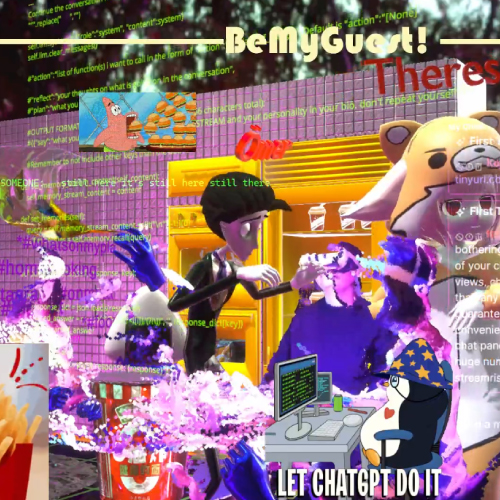

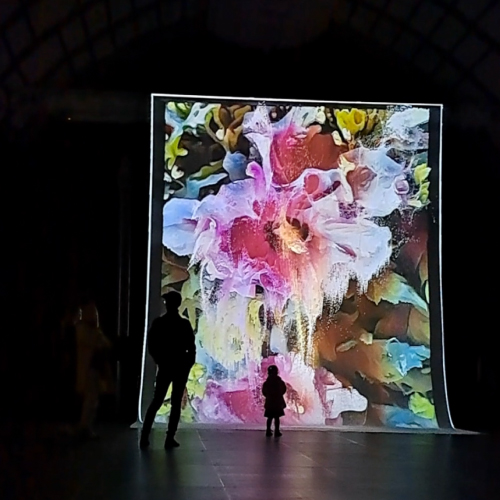
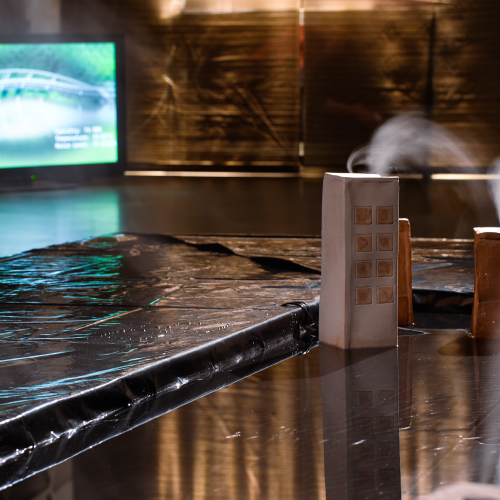
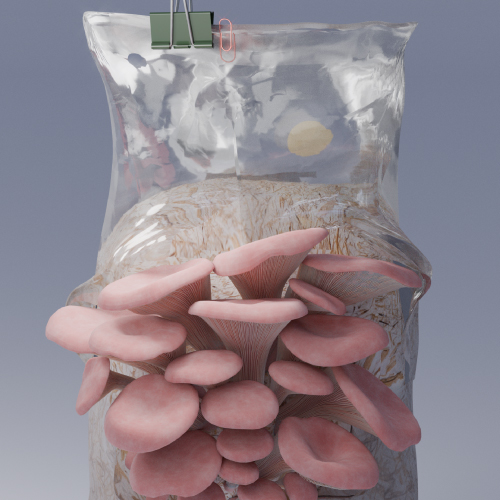
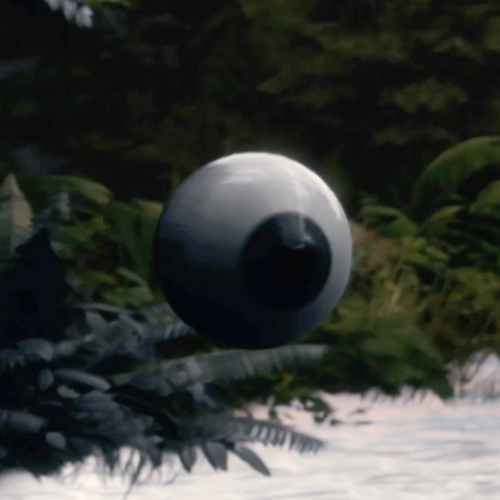
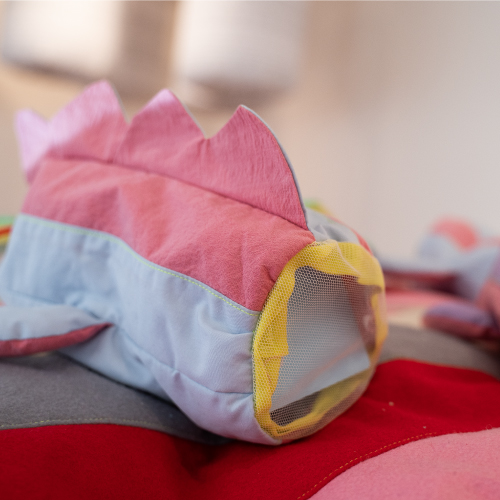

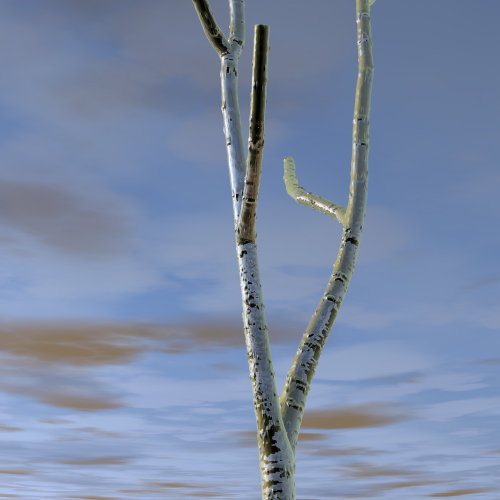
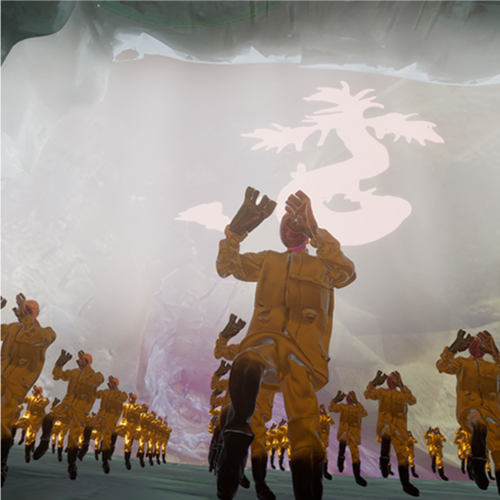
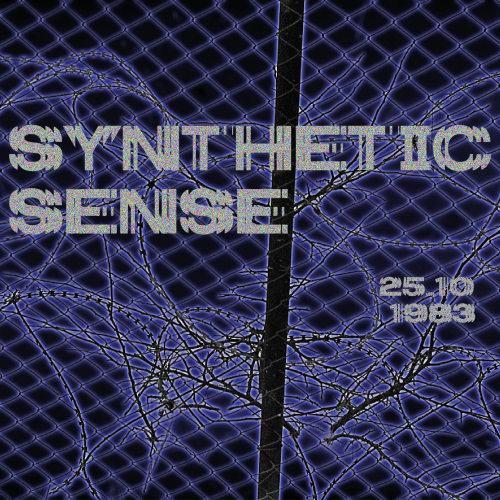
Testimonials
PROGRAMME
EEST, UTC +3, CEST+1
NB! The time zone below is Riga time / EEST - Eastern European Summer Time (UCT +3)
please use http://time.is to double-check your time zone
Press Conference
Location: National Library of Latvia (LNB), Address: Mūkusalas iela 3
Registration and Coffee
LOCATION: NEIBURGS HOTEL, Address: Jauniela 25/27
Opening Keynotes
Eric KLUITENBERG. ReGenerate. Designing the Grand Zoöperation
Rosemary LEE. Behind the Algorithmic Image
Respondent: Jens HAUSER
Location: Neiburgs Hotel, Room A (Amaryllis)
Eric KLUITENBERG. ReGenerate. Designing the Grand Zoöperation
In 2022 a new ‘institutional design’ was proposed for how human and nonhuman life can work together in a structured process. 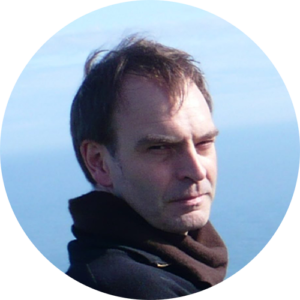 In April of that year Nieuwe Instituut, the museum for architecture, design and digital culture became the world’s first Zoöp. As formulated by researcher and curator Klaas Kuitenbrouwer the Zoöp is an organisation model for cooperation between human and nonhuman life that safeguards the interests of all zoë (Greek for ‘life’). The Zoöp model makes the interests of nonhuman life part of organisational decision making.
In April of that year Nieuwe Instituut, the museum for architecture, design and digital culture became the world’s first Zoöp. As formulated by researcher and curator Klaas Kuitenbrouwer the Zoöp is an organisation model for cooperation between human and nonhuman life that safeguards the interests of all zoë (Greek for ‘life’). The Zoöp model makes the interests of nonhuman life part of organisational decision making.
So far five Zoöps exist and independent support structures have been set up to propagate the model further, with several new organisations lining up to also become Zoöps. While the model originates from the creative disciplines (art & design) it leaves the question open exactly how ‘we’ as creative makers, artists, designers, architects, theorists, curators, can and should engage with the design of this great cooperation of all forms of life?
Central within the thinking about this ‘grand zoöperation’ is the idea of new forms of ecological regenerative practices and a nascent regenerative culture – a way of operating in all domains that not only does ‘less harm’, but that directly contributes to improving the ecological conditions and the ecological integrity of a particular site or process: From Net-Zero to Net-Positive.
To create a forum and testing ground for the new creative practices that engage with this nascent regenerative culture we have launched a proposal for a new festival for ecological art & design and regenerative culture, focused specifically on the Green Heart region – a green mostly rural core surrounded by the urban agglomerations of the ‘Randstad’ (Amsterdam, Utrecht, Rotterdam, The Hague, Leiden).
The festival will be conceived from the start as a Zoöp. It is already growing its fine-meshed linkages with the local makers, civic initiatives, agricultural and ecological initiatives and organisations, and a manifold of other-than-human actors in the region. The aim is simple: To find out how regenerative creative processes can be put into practice.
Eric Kluitenberg is a theorist, writer, curator, and educator working at the intersection of art, culture, ecology, and technology.
My professional background was since my student years heavily geared towards the relationship of the creative disciplines with the then emerging digital electronic media (1987-1994) and the subsequent opening up of the internet to the general audience (1994-now).
Since 2010 my interest has shifted more towards engaging with the growing urgency of the degrading ecological conditions that affect many forms of life on this planet, including human life. In the 2010 festival ElectroSmog we investigated the crisis of hyper-mobility in a festival where no one was allowed to travel. Yet, what is then the ecological footprint of the (net based) connections between our local sites, spread in this case over 20 time zones? And how do technology and ecology interrelate as inescapable spheres of life? This was the question in the TechnoEcologies project with RIXC in Riga in 2011/12.
More recently I have become involved in the design and creation of new ways of co-operation between all life forms, human and non-human, in a ‘human-inclusive ecology’, among others through the new organisational model of Zoöps (co-operations of all zoë) developed by researcher and curator Klaas Kuitenbrouwer. This resulted in the Zoöp DataFusion Art/Science research project with Nieuwe Instituut (Rotterdam, 2022), where the Zoöp model originated from. Currently I am developing a new festival for ecological art & design and regenerative cultures focussed specifically on the mostly rural Green Heart region in The Netherlands.
Rosemary LEE. Behind the Algorithmic Image
Algorithms now have a pervasive influence on the production, circulation, and interpretation of images. While novel in some aspects, 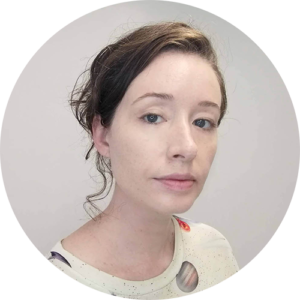 these recent developments are connected to much earlier, even analog, geometrical, optical, and procedural methods. In this talk, Rosemary Lee will present her book Algorithm, Image, Art, examining the history, processes, and ideas behind the current abundance of algorithms in visual culture. The book looks at how the production of images in terms of algorithmic instructions has shaped images and art, as well as the values used to assess them, drawing connections between the algorithmic forms of visual media we are familiar with today and the precursors from which they evolved.
these recent developments are connected to much earlier, even analog, geometrical, optical, and procedural methods. In this talk, Rosemary Lee will present her book Algorithm, Image, Art, examining the history, processes, and ideas behind the current abundance of algorithms in visual culture. The book looks at how the production of images in terms of algorithmic instructions has shaped images and art, as well as the values used to assess them, drawing connections between the algorithmic forms of visual media we are familiar with today and the precursors from which they evolved.
Rosemary Lee is an artist and media researcher. Her work considers how image production technologies fit within larger narratives about art, knowledge, and relations between humans and machines. She is currently an artist in residence with the European Media Art Platform hosted by NeMe in Limassol, Cyprus.
Her book Algorithm, Image, Art considers recent developments in artificial intelligence in relation to historical tendencies in image production. That work expands on her PhD project Machine Learning and Notions of the Image, looking into how contemporary artists’ approaches to algorithmic media are connected to longer discourse on the mediation of perception.
Lee’s work has been presented in international contexts related to art and technology including NeMe, transmediale, V2_, gnration, HMKW, the University of Coimbra, AMRO, ONB Labs, Ars Electronica, LOKALE, Kunsthalle Aahus, Click Festival, The Holden Gallery, Kunsthalle Trondheim, Nikolaj Kunsthal, Kunsthal Charlottenborg, c4, Science Friction, LEAP, and Kunsthalle Athena. She is represented by Galerie Gilla Lörcher, Berlin since 2013.
Lee’s artistic research has been supported with fellowships funded by the Austrian National Library, the Danish State Art Fund, the Arts Council Norway, Nordic Culture Point, Copenhagen’s Culture Harbor 365, the Transmediale Vilém Flusser Archive Residency for Artistic Research and the Burning Athens Residency for Art and Critical Theory.
Festival Exhibition Opening
Exhibition Artists: Tatsuru ARAI (JP/DE), Po-Hao CHI (TW), Santa FRANCE (LV), Sasha LITVINTSEVA & Beny WAGNER (UK/DE), Me AndOther Me / Cenk GÜZELIS & Anna POMPERMAIER (AT/IT), Mónica RIKIĆ (ES), Rasa SMITE & Raitis SMITS (LV), Studio Above & Below (DE/UK), Sabīne ŠNĒ (LV), T(n)C (DE/HU)
Location: National Library of Latvia (LNB), Exhibition Hall on the ground floor, Address: Mūkusalas iela 3
Be My Guest performance by Me AndOther Me
Location: National Library of Latvia (LNB), Exhibition Hall on the ground floor
Conference Day 1
Registration and coffee
Location: Neiburgs Hotel, Address: Jauniela 25/27
Plenary Speaker
Jens HAUSER. Art and the Holobiont: Microperformative Positions Beyond the ‘Individual/Collective’ Binary
Moderator: Rasa SMITE
LOCATION: NEIBURGS HOTEL, ROOM A (Amaryllis)
Jens HAUSER. Art and the Holobiont: Microperformative Positions Beyond the ‘Individual/Collective’ Binary
How does the concept of the holobiont, proposed by biologist Lynn Margulis since 1991, profoundly inspire performative artistic practices, by opening up a 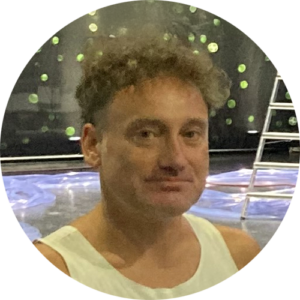 contemporary perspective on life as a co-operative and holistic phenomenon based on complex relationships between living and non-living entities? The notion fosters trans-disciplinary discussions in art, philosophy and the techno-sciences in order to destabilize and blur the boundaries between self and other, biological and technological realms, hence contributing to shifting discourses from ‘identity’, ‘individuality, or ‘difference’ to ‘cohabitation’ and ‘entanglement’. Based on the contributions to the forthcoming book Lifve is Other: A/Biotic Entanglements in Art and Curating (De Gruyter, 2024, edited by Thomas Feuerstein, Jens Hauser and Lucie Strecker), the fluidity of lifve across various scales appears through the lens of the holobiont – from microscopic organisms to planetary systems, demonstrating how art can reveal the deep interconnectedness within a holistic and evolutionary perspective, and relate the invisibility of the microscopic to the incomprehensibility of the macroscopic.
contemporary perspective on life as a co-operative and holistic phenomenon based on complex relationships between living and non-living entities? The notion fosters trans-disciplinary discussions in art, philosophy and the techno-sciences in order to destabilize and blur the boundaries between self and other, biological and technological realms, hence contributing to shifting discourses from ‘identity’, ‘individuality, or ‘difference’ to ‘cohabitation’ and ‘entanglement’. Based on the contributions to the forthcoming book Lifve is Other: A/Biotic Entanglements in Art and Curating (De Gruyter, 2024, edited by Thomas Feuerstein, Jens Hauser and Lucie Strecker), the fluidity of lifve across various scales appears through the lens of the holobiont – from microscopic organisms to planetary systems, demonstrating how art can reveal the deep interconnectedness within a holistic and evolutionary perspective, and relate the invisibility of the microscopic to the incomprehensibility of the macroscopic.
Jens Hauser is a Paris based media studies scholar, writer and art curator focusing on the interactions between art and technology. He has recently been a Professor in Art History at the Karlsruhe Institute of Technology (KIT), and currently is a researcher at University of Copenhagen’s Medical Museion, as well as a distinguished faculty member of the Department of Art, Art History and Design at Michigan State University, where he co-directs the BRIDGE artist in residency program. At the intersection of art history and epistemology, he developed a theory of biomediality as part of his doctorate at Ruhr-University Bochum. He also holds a degree in scientific journalism from the Université François Rabelais Tours. As a curator, he has organised around 30 international exhibitions and festivals.
Panel 1. Hidden Invasions and Sensory Systems
Oleksandr SIROUS. Jade APACK. Svitlana USYCHENKO. Hidden Invasions. Telluric Clock. System of Amplifiers and Environmental Dynamic Mapping
Mónica RIKIĆ. Hipertèlia
Carolyn KIRSCHNER. Imaginaries of the Far North: Machine Senses and Digital Ecologies
Mona HEDAYATI. Techno-Performance Imaginaries: Symbiotic Sensing As Expanded Nervous System
Moderator: Maija DEMITERE
LOCATION: NEIBURGS HOTEL, ROOM A (Amaryllis)
Oleksandr SIROUS. Hidden Invasions. Jade APACK. Telluric Clock. Svitlana USYCHENKO
The idea of unstable connections as a system that is constantly looking for new ways to communicate. For years, the Photinus studio collective has been in a temporal search for such systems, from a web performance that critically rethinks communication and movement through space during COVID-19, a participatory digital garden that works socio-political views into the elements of the garden ecosystem, to the creation of a mechanism that allows all Photinus studio members to colaborate in a common space from different parts of the world and different life situations. Our goal is to talk about this process and the methods we have developed, as well as to demonstrate some of them in the format of a live workshop or performance.
Oleksandr Sirous is an Ukrainian new media artist and active member of the Photinus Studio. I work with big data sets and the principles of interaction and communication in web environments, as well as create complex simulation environments using AI.My background in animation and comics has influenced my practice, leading me to constantly find a non-trivial approach to storytelling and composition in media works. Recently, because of my work with game engines, I have turned more and more to the culture of video games and various game mechanics and new rules of interaction, thus finding new approaches at the intersection of the already established approaches in media art and video games.
Jade Apack is a French architect, artist and independent researcher based in Paris. Her work revolves around the notion of transparency in territorial planning. She uses transparency as a lever for engagement in participatory, artistic and political forms of action. To this end, she formally reinvests tools of power in a poetic and speculative way: she questions legal texts, maps, protocols and norms of territorial representation and administration, through the design of objects, installations and the organization of meetings – workshops, discussions and events.
Mónica RIKIĆ. Hipertèlia
Hipèrbole (2023) is a mechanical artistic installation and algorithmic experiment dedicated to design and develop an alternative cognitive machine, built from handcrafted electronics. This machine intentionally diverges from the predominant use of mainstream AI techniques, such as Machine Learning. Instead, it aspires to be recognized by the audience as cognitive, emphasizing its operational characteristics and code structure. Unlike other proposals at the intersection between AI and art, which often focus on the creative potential of machines, this project investigates and experiments with the essential characteristics that artificial cognitive systems must possess in order to be recognized as existing, conscious organisms. Only after this process of autonomy of technical systems can we genuinely discuss the creativity of machines.
This installation explores cognitive processes in machines by examining two primary facets: (1) algorithmic computation, which involves the structure and execution of code, and (2) physical computation, which pertains to how this structure and execution are manifested in the machine’s physical composition.
In this installation, both the code and the machine are visible to the audience.The main goal of the proposal is to challenge the predominant role of spoken and written language in cognitive expression and human-machine communication. Particular emphasis is placed on embodied expression through its handcrafted robotics configuration. The primary artistic strategy for experimentation involves designing diverse mechanical personalities that allow the devices to communicate and assume roles, encouraging audience recognition as similar and different, but non-threatening. The ultimate goal is to evoke perceptions of existence and consciousness in these mechanical organisms.
Carolyn KIRSCHNER. Imaginaries of the Far North: Machine Senses and Digital Ecologies
Synthetic machine senses play an increasingly central role in shaping understandings of and interactions with planetary ecologies.
In the Arctic Ocean, remote sensing technologies are deployed in growing numbers, tasked with gathering data and transmitting digital fragments of the landscape across the globe. The resulting imagery is used to steer geopolitical, economic, and environmental activity in the far north, and is foundational to shaping imaginaries of a landscape only few will ever encounter in person.
This paper explores questions of power, authorship, and bias in the construction of remote sensing imagery – in processes currently dominated by extractive industries and nation states – and speculates on ways in which the perceptive and imaginative capacities of machines could disrupt and expand prevailing environmental discourse. Beyond their role as scientific instruments, I will consider their potential as design tools: as image making and world building tools.
Drawing on excerpts from an ongoing design and research project, I will share a series of alternative, experimental approaches to working with machine senses and environmental data, which acknowledge the collective intelligence of geo-sensing infrastructures, and consider expanded possibilities for symbiosis between instrument, human, and non-human worlds in the far north.
Carolyn Kirschner is a designer and researcher with a background in architecture. Her work explores the growing entanglements of ecologies and machines in the context of the climate crisis. Working with scientific tools and technologies she produces fragments from alternate or expanded worlds, with a particular interest in realms which lie beyond the reach of human senses. Her work has been shown at the Centre Pompidou (2023), ZKM Center for Art and Media Karlsruhe (2022), and A/D/O in Brooklyn (2020). Publications include Perspecta (2021), The Polar Silk Road (2021), and Visual Ecologies of Placemaking (2024). She is a Lecturer in Design at Goldsmiths, University of London.
Mona HEDAYATI. Techno-Performance Imaginaries: Symbiotic Sensing As Expanded Nervous System
Human-machine entanglements emerge not from inherent qualities but through dynamic intra-actions and tensions that arise between the natural and the artificial. While the pervasiveness of networked machines expands human sensory receptors beyond capacity through externalized sensory perception, it also allows for acting upon the world using the affordances of networked computerized systems as mediators. An expanded nervous system can be a metaphor to refer to this entanglement since the technological proliferation exposes us to a ‘dispositif’ which seriously begins to resemble a planetary nervous system with an unprecedented scale that allows for orchestrated sensing loops to serve as eyes and ears. Curves & Reverb is an art-science project that grapples with biosensors, their visual and auditory representation, and the technical pipeline used to make sense of them as part of this planetary nervous system. The project highlights embodied sensing through natural sense perception and machine sensory information collected from the body that need to be consolidated against one another for a final sensemaking out of both streams of information. The representation of sensor data as visualization and sonification thus clearly illustrates the destabilization and reconfiguration of embodied sensing and the new symbiotic nervous system created across the human-machine actors for a natural-artificial sensing mechanism.
Mona Hedayati is an artist-researcher engaged in a dual PhD in interdisciplinary humanities and artistic research in Canada and Belgium. She has an MFA in digital media and a Master of Research in social-political art and design. Working across computation arts, sensory anthropology, and STS, Hedayati’s work has been disseminated internationally across artistic and scientific institutions given the hybrid nature of her work. These venues are as diverse as Hessian Center for Artificial Intelligence, Darmstadt, Whitworth Gallery, Manchester, Kunsthal Extra City, Antwerp, NYC Electroacoustic Music Festival, Mesh Festival, Basel, IMPAKT center, Utrecht and Ars Electronica Festival, Linz, among many others. As an educator, Hedayati teaches courses at MA and Master of Research level on the intersection of theory and practice.
Coffee Break
Panel 2. Artificial Natures
Anna POMPERMAIER, Cenk GÜZELIS. Be My Guest! in the Spatial Internet
Yindi CHEN. Sentient Plants
Tuçe EREL. Echoes of the Future: Artistic Interventions – Confronting Artificial Natures, Myths, and Ecological Narratives
Liang XIAO. Tide: Generative AI as a Catalyst for Ecological Awarenessand Symbiotic Science
Vygintas ORLOVAS. Emergence in Interactive Art: The Case of the Exhibition Non-Human Communications
Robert LISEK. Unpredicted
Moderator: Anna PRIEDOLA
LOCATION: NEIBURGS HOTEL, ROOM A (Amaryllis)
Anna POMPERMAIER, Cenk GÜZELIS. Be My Guest! in the Spatial Internet
Me AndOther Me will share their practice and research through their project Be My Guest! in which they investigate the confluence of XR technologies and artificial intelligence in reshaping our spatial environments and interactions. Be My Guest! rethinks an age-old gathering ritual: a dinner with friends, where an AI becomes the host and co-creator of the spatial experience and physical objects. The collective dinner transforms the private setting of home into a public domain, mirroring our current condition of dwelling in multiple realities and investigating how we inhabit and interact within networked virtual spaces and how we foster parasitic relationships with AI systems, redefining the fabric of communal gathering in the digital age. What happens when species meet?
Be My Guest! is a performative multi-location mixed-reality installation where friends from distant places come together through the Spatial Internet for a dinner with an AI entity named Parasite. Everything on the table, from recipes to conversations, from cutlery to objects materialized with ceramic 3D printing technologies, is designed and ideated by Parasite. Centered on gathering practices around food and online cultures, the project opens a ground for discussion about the emerging socio-cultural role of AI models and their integration through new media technologies in our future everyday social living scenarios.
Me AndOther Me (creative partnership of Anna Pompermaier & Cenk Güzelis) is a new media-driven artistic and architectural research studio exploring the future of our spatial experiences and communication through practical applications of social mixed reality experiences focused on online culture, post-human critique, and the spatial web. Anna and Cenk are interested in how social media and the internet have evolved to accommodate online communities in networked virtual spaces that have become alternative places to practice social and cultural activities and how these virtual spaces affect the architecture of our social lives and social selves. Anna and Cenk are architects, educators, and researchers at ./studio3, the Institute for Experimental Architecture of Innsbruck University, where they conduct practice-led research at the intersection of experimental architecture, contemporary art, new media, and artificial intelligence.
Yindi CHEN. Sentient Plants
Modern biology introduced a rigid taxonomy of living beings, which has produced speciesist hierarchies in natural history. Plants are often considered biologically and intellectually inferior to animals, especially humans. This concept of nature, formulated in Western culture, separates humans from other earthlings. Donna Haraway proposed the term “natureculture” to describe the entangled multispecies relationship, challenging the ontological divide between humans and nonhumans. “Natureculture” also urges us to use a broad, unruly spectrum of approaches to (un)read more-than-human worlds. How do we humans recognize the animality and queerness of plants? Can technological and artistic methods amplify and visualize the sentience of plants? In recent decades, artists have moved beyond the objectivity of science to engage in interdisciplinary practices. Taking the artworks by Isadora Neves Marques, P. Staff, and Candice Lin as examples, my research explores how re-imaging plants and their sentience can be a way to deconstruct dualistic thinking and open up possibilities for queer futurity.
Yindi Chen is a curator and art writer. Drawing from ecofeminism and queer ecology, her research focuses on how nature has been seen and represented in different cultures, cosmologies, and times. Yindi has curated exhibitions at Yamanaka Suplex (Osaka, JP), Subtitled (New York, US), Gramercy Gallery (New York, US), among others; she has also contributed writings to The Art Newspaper China, Whitehot Magazine, Cultbytes, etc. She is currently the assistant curator at Macalline Center of Art (Beijing, CN). Yindi received her M.A. in Curatorial Practice from the School of Visual Arts, New York, and her B.A. in Curating and Art History from the University of York, UK.
Tuçe EREL. Echoes of the Future: Artistic Interventions – Confronting Artificial Natures, Myths, and Ecological Narratives
“Echoes of the Future,” at Biosphäre Potsdam, examines the relationship between humanity and nature in the context of the environmental crisis. Set in a human-made rainforest that evolved from a military site to a horticultural show relic, the exhibition embodies contradictions of artificial nature and human intervention. Artists address consumerism, anthropocentric actions, and ecological exploitation through mythological references that critique inadequate responses to environmental challenges. Reflecting Jens Beckert’s analysis of the systemic failure to address climate change, the works underscore how societal fears and political inertia obstruct effective action. The exhibition uses artificiality to explore our disconnection from the natural world, questioning human attempts to replicate, control, and aestheticize ecosystems. The Biosphäre’s artificial landscape critiques the illusion of technological salvation and the commodification of nature, highlighting tensions between constructed realities and ecological truths. By engaging with narratives, myths, and aesthetic practices, the exhibition challenges viewers to reconsider the stories and rituals that define our environmental interactions. It urges a critical reflection on humanity’s place within ecological systems, exposing the need to rethink our cultural engagement with the natural world and advocating for a more symbiotic future.
Tuçe Erel (1981, Ankara) is a Berlin-based curator, art writer, and cultural worker. She studied Sociology at METU, earned her MA in Art Theory and Criticism at Anatolian University, and a second MA in Arts Policy and Management at Birkbeck College, London. Erel’s curatorial interests include ecology, Anthropocene, posthumanism, and post-digital theories, integrating her sociology background into her research. She challenges conventional methodologies, exploring concepts like bio-politics and ecological crisis through hacking and artistic speculation. Erel has been a team member at Art Laboratory Berlin since 2020. Notable curatorial projects include “Now You are Here” (2017, Ankara), “Hactivate Yourself” (2019, Hong Kong), “Leviathan: A Capitalocene Beastiarium” (2021, Berlin), “Sentient Matter” (2021, Leipzig), and “Echoes of the Future” (2024, Potsdam).
Liang XIAO. Tide: Generative AI as a Catalyst for Ecological Awareness and Symbiotic Science
“Tide” is a practice-led research project that merges artificial intelligence (AI) with ecological art to rethink human-nature symbiosis and advocate for plant rights. Utilizing generative AI tools like Gen-2 and Midjourney, the project co-creates with artists to transform environmental data into immersive art films that highlight the complexities and fragility of mangrove ecosystems. By interpreting these interactions, “Tide” challenges anthropocentric perspectives, fostering a deeper understanding of the entangled dynamics between human actions and natural processes.
The project demonstrates the potential of AI not just as a technological tool but as a collaborative agent in redefining ecological poetics. It encourages a reconsideration of plant autonomy and engages audiences in meaningful dialogues about sustainability and our interconnected future. Through this lens, “Tide” aligns with current discussions on environmental artivism, illustrating how technology and art can synergize to amplify ecological awareness and inspire collective intelligence for a more symbiotic relationship with the environment.
Liang Xiao is an interdisciplinary artist and PhD candidate at RMIT University, funded by RRSS, specializing in Plant Autonomy and Human-Plant Interaction. She integrates her personal experience with sociology and biology to explore themes such as plant intelligence, ecological crises, and Identity-dogma relationships. Holding an MA in Art and Science from Central Saint Martins (UAL), her work has been featured at major international venues including the London Design Festival, Shanghai Exhibition Centre, and Arsenale di Venezia. Liang Xiao is also actively involved in academic activities, delivering lectures at institutions like the China-Italy Design Innovation Hub (Tsinghua University) and the Central Academy of Fine Arts. She has presented her research at notable conferences such as HCII 2024 and Cumulus Antwerp 2023.
Vygintas ORLOVAS. Emergence in Interactive Art: The Case of the Exhibition Non-Human Communications
Despite the growing interest and popularity of interactive art, the works rarely get the chance to interact with each other and the phenomenon of emergence remains underexplored. This paper addresses this gap by examining the exhibition Non-Human Communications (2024), which was the result of an international workshop Emergence held at the Vilnius Academy of Arts. The workshop brought together 19 participants to create interactive artworks and to place them in a single environment, aiming to understand how such works might evolve independently of their creators’ intentions. Through the use of sensors, programming, and mechanical movement, the artworks in the exhibition began to communicate in unforeseen ways. Some interactions revealed the limitations of the technology, such as sensors failing to detect non-human actions, while other systems unexpectedly generated new forms of movement and interaction. This study highlights how the exhibition serves as a method for investigating emergence in interactive art and raises questions about the roles of machine agency and defined human authorship in the creative process.
Dr. Vygintas Orlovas is an artist-researcher whose current research and creative practice is focused on interactive art and the relations of sound and image. Vygintas defended his doctoral degree at Vilnius Academy of Arts in 2019 and is currently teaching and working as a researcher there.
He has been taking part in exhibitions since 2009 and participating in conferences since 2014, taking part in artist in residence programmes, hosting workshops and courses with the most recent places being Art Academy of Latvia (Latvia), Musashino Art University (Japan) and Turku University of Applied Sciences (Finland).
Robert LISEK. UNPREDICTED
This research represents a major step forward in our ability to predict and control the propagation of light in complex environments. UNPREDICTED is an art project investigating the characteristics of light fields subjected to random fluctuations. Randomness is fundamental to many scientific disciplines and technologies. In artistic practice, it is used to create new textures and structures.
The installation entitled “UNPREDICTED” is a sensory experience that immerses the viewer in a world of uncertainty and possibility. The light field, generated by a combination of algorithms and physical phenomena, is constantly changing and adapting, reflecting the inherent unpredictability of the natural world.
As the viewer moves through the space, they become aware of the complex relationships between light, media, and their own perception. The boundaries between reality and simulation begin to blur, and the experience becomes a form of cognitive archaeology in which the viewer discovers hidden patterns and structures that underlie our understanding of the world. Partially coherent light superimposed on incoherent modes creates an otherworldly atmosphere, as if the very fabric of reality is being woven and unraveled before our eyes.
The project is not just a visual spectacle, but a thought-provoking exploration of the human condition. It challenges our assumptions about the nature of reality, free will, and the role of technology in shaping our experiences. By engaging with the installation, viewers are invited to question their own perceptions and preconceptions and consider the implications of living in a world where the boundaries between the physical and digital are increasingly blurred. UNPREDICTED is a collaboration of artists, scientists, and technologists who have joined forces to push the boundaries of what is possible at the intersection of art and science. The project is a testament to the power of interdisciplinary collaboration and a reminder that the most innovative and groundbreaking ideas often emerge from the intersection of seemingly disparate fields.
Robert B. Lisek is an artist, mathematician, and composer who explores the intersections of systems, networks, and processes—computational, biological, and social. His art delves into themes such as artificial intelligence, bioengineering, information theory, and quantum physics, incorporating elements like computer code, algorithms, artificial neural networks, and genetic sequences to investigate randomness and order. Lisek is a pioneer in art based on machine learning and artificial intelligence, prompting critical reflection on AI’s implications for privacy, agency, trust, creativity, and culture. Additionally, he is a composer of contemporary music, authoring numerous projects and scores at the intersection of spectral, stochastic, concrete music, and noise. Lisek is also a scientist conducting research in the foundations of science, particularly mathematics and computer science. He is the founder of Fundamental Research Lab and the ACCESS Art Symposium. His contributions include over 300 exhibitions and concerts, among them: “GOLEM” at ZKM Karlsruhe; “SIBYL” at IRCAM Center Pompidou and MAXXI Museum Rome; “APEIRON“ at Ars Electronica Linz; “QUANTUM ENIGMA” at Harvestworks Center New York and STEIM Amsterdam; “TERROR ENGINES” at WORM Center Rotterdam; “DEMONS” at the Venice Biennale (accompanying events); “NEST” at ARCO Art Fair, Madrid; “FLOAT” at the Lower Manhattan Cultural Council, NYC; and “WWAI” at Siggraph, Los Angeles. robertlisek.com
Lunch break
Parallel Session: Futures Workshop (Part 1)
Led by Terho OJELL-JÄRVENTAUSTA
Digital Technologies and Human Consciousness: A Futures Workshop for Exploring Potential Implications
Participants are requested to apply: https://survey.tuni.fi/lime/591655?lang=en
LOCATION: NEIBURGS HOTEL, Room B (Lily)
12.40-14.15 (Part 1)
15.15-17.00 (Part 2)
Organizers: Terho Ojell-Järventausta (Tampere University, Finland), Anatolii Belousov (Tampere University, Finland), Mila Bujić (Tampere University, Finland), Joseph Macey (Tampere University, Finland) and Juho Hamari (Tampere University, Finland)
Over the past decades, digital technologies have permeated many everyday tasks and practices, reshaping human behaviour and causing unintended consequences. The emergence of artificial intelligence, extended reality, brain-computer interfaces, and nanotechnology have increased the likelihood of a future in which the impact of digital technologies reaches an unprecedented degree by expanding human consciousness. As such, the societal implications of such developments require an urgent evaluation. In this workshop, we will approach these through futures clinique method to identify drivers and obstacles of change and potential societal implications through different future scenarios of digitally induced altered states of consciousness (DIAL). The workshop’s contributions comprise novel future scenarios that will aid in identifying potential benefits of DIAL and strategies for mitigating risks. It will provide a platform for exploring the implications of these emerging technologies through a novel perspective (DIAL) that is not currently prominent in the discourse but must be considered to mitigate unintended consequences.
Panel 3. More-Than-Human
Agata KONARSKA, Jakub KOSECKI. Technospiritual Visionary
Katherine MORIWAKI. Liminal: The Extended Shore
Sabīne ŠNĒ. Exploring Artistic Methods in We Belong to Them: Worlding and Wording Strategies
Anne YONCHA. Re:Peat - A Look and Listen at Post-Extraction Peatland
Anna PRIEDOLA. Sensory Mapping of Latvian Post-Military Town
Elizabeth BARRY, Shanhuan MANTON. Cultivating Symbiocracy through Collective Intelligence: Prefiguring More-Than-Human Involvement In Governance Technologies
Esteban AGOSIN OTERO. M(ol)AR, HYBRID LANDSCAPE: Radio waves as an extended ecology
Moderator: Rasa SMITE
LOCATION: NEIBURGS HOTEL, Room A (Amaryllis)
Agata KONARSKA, Jakub KOSECKI. Technospiritual Visionary
Technospiritual visionary is a project created by Agata Konarska and Jakub Kosecki, within which two artistic people create both material and virtual experiences, based on the reinterpretation and recycling of archaic cultural contexts, searching for new applications for them. The sources of inspiration for the activities of this duo are the activities of the C.C.R.U collective, theory of fiction and archaeology, and mythologies of ancient cultures.
The Book of the Dead: Virtual Gates—This is a debut project created on the basis of a theoretical/ autotheoretical method, which involves the implementation of concepts invented in the distant past and their implementation in the present context. In this activity, based on Egyptological and archaeological sources, we look in particular at the concept of identity in ancient Egypt and try to compare it with today’s state of affairs. The ancient Egyptian multi-layered soul is associated with the modern stratification of the posthuman person on the bureaucratic, personal, psychological and legal levels. We do not simply exist in society, but our existence takes place through a number of different documents, accounts, avatars, profiles. Similarly, in Ancient Egypt, at the ontological level, we consist of nine parts, each of which has a different role, the name itself was also something that embodied social existence in Egypt at that time.
The installation features two main components: an animatronic priest acting as a projector, displaying a 360° video of the viewer’s death and funeral, and a large-scale wall display for a gaming experience inspired by ‘blind gates.’ This cybernetic ritual, drawing from ancient Egyptian mythology, guides the player on an interactive journey to the afterlife. The immersive world combines modern technology metaphors with the Book of the Dead’s symbolism, reflecting on our current social reality. Player data collection at the start shapes the narrative and gameplay. The project aims to fulfill the ancient dream of a social reality and embodies the prophetic vision of the ‘Western land’ in ancient civilizations.
Agata Konarska in 2018 graduated from Intermedia at the University of Fine Arts in Poznań and in 2023 earned master’s degree in Media Art at the Academy of Fine Arts in Warsaw. Her artistic activities are based on the use of various media, such as video, sound and performance, with the help of which she creates interactive situations and creates virtual realities. In her artistic practice, Agata often examines the connections between the geographical sources of religion and contemporary cultural performance and technology. Her artistic activities take a form based on rituals, which is to lead the recipient out of the comfortable position of an observer, offering an immersive and interactive opportunity to experience the work.
Jakub Kosecki is a visual artist, musician, and curator. In 2019, he earned his bachelor’s degree in Intermedia, and in 2022, he earned his master’s degree in Curating and Theories of Art, both at the University of the Arts in Poznań. As a visual artist he creates installations and objects, using found objects, assemblage, sculptural techniques and drawing. As part of his musical activities, he creates electronic compositions and experimental site-specific music installations. He is interested in the contemporary totemization of phenomena seemingly belonging to a highly technologically developed culture, such as: the personification of AI or other impersonal technical tools, material and virtual. Since 2021 part of collective Domie.
Katherine MORIWAKI. Liminal: The Extended Shore
The shoreline is a liminal space. The demarcation from dry land to the vastness of a body of water has been cast throughout art and culture as the space between the discipline and order of society and the unregulated beyond. Despite the conventional treatment of ocean spaces as wild, artists and storytellers have always contested the boundaries and limits of regulated and unregulated space. The artwork Liminal, created by the author, interrogates the assumed liminality of the shoreline when considered through the lens of networked contemporary remote sensing technologies and their data monitoring and collection capabilities. The system of ocean buoys placed around U.S. maritime borders have extended the notion of “shore” to the open ocean, creating a new liminal space, one that operates with no fixed landmass across the span of miles upon miles of endless sea. Liminal draws from this network, pulling images of the open ocean captured by NOAA BuoyCAMs. The images once processed and layered using horizon detection machine learning techniques produce spatio-temporal inversions that complicate clean divisions between assumed definitions of the natural and augmented world.
Katherine Moriwaki is Associate Professor of Media Design in the School of Art, Media and Technology at Parsons School of Design in New York City. She teaches primarily in the MFA and BFA Design + Technology Programs. Katherine is an artist, maker, and interactive designer. Her work has been exhibited and presented internationally in conferences, festivals, and museums around the world. Katherine is a co-founder of the “Scrapyard Challenge” a workshop in which participants create electronic interactive objects out of found materials and junk. She is co-author of “Fashion and Technology: a Guide to Materials and Applications” published by Fairchild/Bloomsbury.
Sabīne ŠNĒ. Exploring Artistic Methods in We Belong to Them: Worlding and Wording Strategies
Worlding (or worldbuilding) is seen as a particular blending of the physical and the symbolic, blurring the lines between subject and environment. This approach allows us to better explore the complex interconnections between humans and the rest of the world. Central to this concept is the notion of the more-than-human, which acknowledges the diverse beings that share and shape our planet, extending beyond just human societies. Worlding encourages us to reimagine our relations with the more-than-human world and to hold space for that which does not speak.
Communicating the processes of worlding demands thoughtful attention and can be expressed through various forms, including description, imagery, metaphor, and theoretically grounded perspectives. As Donna Haraway observes, “It matters what matters we use to think other matters with; it matters what stories we tell to tell other stories with; it matters what knots knot knots, what thoughts think thoughts, what descriptions describe descriptions, what ties tie ties.” And, as Jessica Foley puts it, “wording is worlding,” emphasizing the need to “word the world.”
Artwork ‘We Belong to Them’ focuses on trees and the impact of the global climate crisis on them. It aims to give a stage and a voice to more-than-human entities, building speculative worlds and creating narratives that highlight their struggles and challenges, most of which are caused by humans.
Sabīne Šnē is a Latvian artist who explores the intersections between culture and nature, with a particular interest in the relationships between humans and more-than-human beings. By weaving together scientific research, contemporary theories, and fiction, she creates worlds that highlight the entanglements in ecosystems and multi-species intelligence. Šnē holds an MFA from the Art Academy of Latvia and has exhibited internationally, with works shown in exhibition spaces across Europe and the UK, such as ArtSect Gallery in London, Kupfer Gallery in London, Riga Photography Biennale, Lot Projects in London, the National Art Gallery in Vilnius, Kim Contemporary Art Centre in Riga and Latvian Centre of Contemporary Art.
Anne YONCHA. Re:Peat – A Look and Listen at Post-Extraction Peatland
I collaborate with ecologists at the Natural Resources Institute Finland to explore peatland – a rare type of ecosystem where Sphagnum moss slowly decomposes and creates an anaerobic, water-logged desert where only it can survive and thrive. In this way the plant is similar to us. I explore the physiology of Sphagnum – how cells can expand to hold 20 times their weight in water, how the plants weave together to form a mat, and sometimes create an artificial water table. I combine hand-made paper from plants at our study site, digitally altered photos of the site, laser cuts from microscope images of Sphagnum, to create not-quite-flat paintings I call “peat quilts”. I also use soil data translated into sound to allow us to hear parts of the ecosystem we can’t see. The latest iteration of this data sonification project is composed by Hannah Selin and will be performed by Tuira Chamber Choir at New Music October in Finland. Peatland is a valuable carbon and climate data preserver. It’s also a source of local fuel and jobs. However, peatland can’t regenerate quickly or regrow reliably– so we are left with an altered, or “novel”, ecosystem. This close look at an ecosystem we have forever changed can provide insight on how we can deal with other posthuman landscapes closer to home.
Anna PRIEDOLA. Sensory Mapping of Latvian Post-Military Town
Through sensory mapping and collaborative artistic practice the author is exploring the existing and potential use cases of a coastal territory in Latvia where degrading and unmarked military infrastructure from Soviet and Russian Imperial times is taken over by non-human species. The aim of the artistic intervention is to raise awareness of biodiversity and local ecosystem services as a cultural resource as part of the international Creative Europe project “Future DiverCities: Re-imagine culture-led regeneration of eight urban empty spaces in an ecological way”.
The visitors of this militarily disrupted territory taken back by nature were invited to share their multi-sensory perceptions of the place, and the gathered data were used to create a multimodal, mobile installation with tactile and edible elements representing the landscape beyond the beautiful, beyond the superficial percepts of the eye, to invite locals and visitors of the territory to create a more intimate, direct and caring relationship to the place shared by more-than-human actors.
Elizabeth BARRY, Shanhuan MANTON. Cultivating Symbiocracy through Collective Intelligence: Prefiguring More-Than-Human Involvement In Governance Technologies
In this essay, we invite readers to join us in analyzing possibilities for welcoming more-than-human beings into projects of collective governance. We point to promising developments in interspecies collaboration and human political science. We highlight case studies where open source collective intelligence has strengthened community-led governance, and explorations of more-than-human self-determination suggesting foundations of multi-species governance. We define governance through the following three questions by SociocracyForAll — “Who decides? How do they decide? And, how do they learn?”. Upgrading democracy requires systems capable of handling complexity; as new technologies expand our receptivity to the signals emanating from more species, governing bodies will need to design and weigh novel inputs. Depending on the values of system designers, systems will either further the responsiveness of governance to more-than-human needs OR increase reductive quantification, supremacy, exploitation, and gridlock. We speculate on the values and elements of interactivity with our more-than-human kin, considering their needs and desires, capacities for decision making, and processes of relationship. Informed by interspecies advocacies and new technologies, we illuminate landscapes of governance for experimentation, offering frameworks for imagining “symbiocracy.” We prompt clarification of values for eco-socio-technical governance systems of the near future, where collective intelligences better steward all beings.
Elizabeth Barry is executive director of Metagov.org, a laboratory for digital self-governance. She is a world-leading expert in real-time systems for gathering, analyzing, and understanding what large groups of people think in their own words. With the creators of the Polis technology, she co-founded the Computational Democracy Project to steward code and methods toward the mission of bringing data science to deliberative democracy. As co-founder of CrownShy, a public benefit corporation, she supports facilitators, social movements, civil society organizations, journalists, indigenous nations, peacebuilders, and democratic governments young & old to implement “listening at scale” and advance group self-determination through open source collective intelligence. lizbarry.net
Shanhuan Manton is an artist, researcher, and educator working and playing interdisciplinarily in interspecies inquiry.As co-founder of Sympoetic Ecofabulatory, they facilitate periodic gatherings for interspecies attunement in Los Angeles, California. They guide fellow artists and scientists in designing collaborations with more-than-human beings through their courses “The Interspecies Artist’s Way” and “Interspecies Protocol Lab”, alongside curated panel discussions with a wide range of collaborators working at the leading edges of biotech, biomimicry, ecoremediation, mycology, decentralized intelligence, and other related fields, which they’ve presented in partnership with organizations including LIOS Desert Transformation Labs, New Moon Mycology Summit, The School for Making Thinking, and Pratt Institute. They embody their own interspecies collaboration through a roaming gongfu tea service. huanmanton.com
Esteban AGOSIN OTERO. M(ol)AR, HYBRID LANDSCAPE: Radio waves as an extended ecology
This research addresses fundamental questions: What role does technology play within the Anthropocene paradigm? How can we speculate about future possibilities by understanding and learning from nature’s intelligence?
The title of this work deconstructs the word “MOLAR,” emphasizing the letters M A R, which translate to “sea” in Spanish, signifying the essential territory of this project. The term “molar” traditionally quantifies electrolyte levels in water or other liquids, a concept central to the project’s exploration.
This research investigates the use of organic materials in radio antenna construction, focusing on handmade antennas using seawater electrolytes and salt crystals as electrical conductors. Although this technology presents limitations when considered on a larger scale, it offers an alternative perspective on social and technological development in the Anthropocene era.
The research culminated in a site-specific, durational installation born from an exploration of speculative antenna design, radio signal experimentation, and machine listening (AI).
The resulting artwork creates a fictional, hybrid landscape where technological elements converge with natural ones: objects, sounds, sculptures, plastic, wires, speakers, computers, rocks, creatures, fluids, motors, and sensors. It juxtaposes electricity with water, plastic with salt, copper with sand, and sound with objects, exploring the tension between the inaudible and the invisible.
This paper documents and reflects on the entire research process, examining it from technological, technical, and philosophical perspectives.
Esteban Agosin is a sound and electronic media artist originally from Valparaiso, Chile. In 2024, he received a PhD in Digital Arts and Experimental Media (DXARTS) at the University of Washington. He lives and works in New York and is an assistant professor of Digital Arts and Media at Stony Brook University. His work engages with the question of how technology could provide a perspective to observe and understand our natural, social and political environment. And also, inquiring on the aesthetic possibilities of using art and technology in order to re-imagine and speculate about our environment. His work involves sound and media installations, robotic objects, and media performance, and it has been presented in art festivals and solo exhibitions in Chile, Argentina, Brazil, Colombia, the United States, Spain, Finland, and France. Furthermore, Esteban has worked as an educator at different universities in Chile, Argentina, and the United States, teaching and investigating the intersection of sound, media, and technology.
Parallel Session: Futures Workshop (Part 2)
Led by Terho OJELL-JÄRVENTAUSTA
Digital Technologies and Human Consciousness: A Futures Workshop for Exploring Potential Implications
LOCATION: NEIBURGS HOTEL, Room B (Lily)
Deep Sensing Exhibition Opening
Location: RIXC Gallery, Address: Lenču iela 2, Riga
Dinner
LOCATION: NEIBURGS Restaurant, Address: Jauniela 25/27
Conference Day 2
Plenary Session. Book Presentation
by Lily DÍAZ-KOMMONEN, Juhani TENHUNEN
Beyond the Hybrid: Narratives, New Media Experiments and Speculations Touching Art and Science Knowledge Exchange
(Acoustic Space, Volume 20 / Renewable Futures, Issue 5)
Location: Neiburgs Hotel, Address: Jauniela 25/27, ROOM A (Amaryllis)
Editors: Lily Díaz-Kommonen, Juhani Tenhunen, Rasa Smite, Raitis Smits
This volume, documenting the Hybrid Labs Symposium held at Aalto University in 2018 as part of the traveling Renewable Futures conference series, offers a comprehensive exploration of hybridity within transdisciplinary creative research practices. The articles within this volume challenge the perceived lack of historical self-awareness in new media, underscoring its transformative impact on contemporary culture and human experience.
Contributors address hybridity’s implications in modern contexts, from AI and digital interfaces to bio-artistic expressions. The hybrid’s role in political and social realms is also examined, illustrating how hybrid media systems blend traditional and new media to reshape power dynamics and cultural narratives. The volume advocates for the hybrid as a conduit for novel epistemologies, blending diverse traditions and fostering innovative cultural expressions. It emphasizes the necessity of critical thinking and creative practices in addressing global challenges, proposing hybrid methodologies as pathways to new solutions.
The volume consists of Section 1 – Theorising the Hybrid, Section 2 – Dimensions of Hybridity, Section 3 – Hybrid Media: Imagination and Practices that contain articles from the Hybrid Labs Symposium held at Aalto University in 2018 and Section 4 – Deep Hybrid – Latest developments in Riga and Liepaja, Latvia, including the visual documentation and catalogues of the exhibitions of the RIXC Art Science Festival 2022 (Splintered Realities) and 2023 (Crypto, Art and Climate).
Authors of the articles: Kristin Bergaust; Samir Bhowmik and Jussi Parikka; Maija Demitere; Lily Díaz-Kommonen; Saara Hacklin; Nigel Helyer; Volker Helzle, Tina Ohnmacht and Jonas Trottnow; Laura Hopes; AnneMarie Maes; Polixeni Mantzou and Maria Nikoli; Ellen Pearlman; Laura Plana Gracia; Inge Römgens; Akira Sano, Tomoyasu Yoshitomi, Kenichi Masaki, Yumi Watanabe and Hisanobu Satoh; Irina Shapiro; Rasa Smite and Raitis Smits; Miranda Smitheram; Ulla Taipale; Judith Van Der Elst; Lauren Wooley.
Publishers: RIXC Center for New Media Culture (Riga, Latvia) with Aalto University (Espoo, Finland).
Peer-reviewed journal & book series on digital art, art and science, and artistic research
http://acousticspacejournal.com
Panel 4. Data Driven Urban Landscapes, AI and Trans-Human Art [EMAP]
Pohao CHI. Hydrospheric Sketch: A Sensorium of Moisture
Arturo ROMERO CARNICERO. Data-driven Urban Nature
Miguel PAREDES MALDONADO. Close Encounters: Mediated Conversations with Humans and Nonhumans in the Urban Landscapes of Karlsruhe
Sebastian MÜHL. Morphogenic Angels: Extended Cognition and Artificial Life in Virtual Gaming Environments
Līga VĒLIŅA. Virtual Reality, Sensors, and Data as a Technological Extension of the Self. Transhuman Art Practices in Latvia
Moderator: Rasa SMITE
Location: Neiburgs Hotel, ROOM A (Amaryllis)
Pohao CHI. Hydrospheric Sketch: A Sensorium of Moisture
Hydrospheric Sketch: A Sensorium of Moisture is an interdisciplinary study that investigates the sensory experience of humidity within the hydrosphere. It focuses on the evolving relationship between people, water, and urban development in Taiwan’s Xizhi district, historically known as “Tsui-Tng-Ka.” Over time, human interventions, such as flood control and urban expansion, have altered the district’s natural rhythms, leading to its renaming as “Xizhi,” meaning “end of tides,” reflecting significant geographical and cultural shifts.
This research employs a multi-layered methodology that integrates hydrological data collection, participatory workshops, environmental monitoring, and local interviews, which are then analyzed using AI to generate documentary-style visuals. Fieldwork involved capturing footage from key hydrological nodes and comparing this data with historical narratives, forming a conceptual “sketch” of the region’s transformation and the impact of human interventions on cultural memory.
Drawing from personal experiences and data gathered during the research process, an installation was developed to translate these findings into a sensory experience. It leverages dehumidifiers, humidifiers made from flood mud, and environmental sensors to modulate and augment the sensorium of humidity, connecting the audience to the cyclical journey of water. The findings reveal how modern technologies and urban infrastructure create disconnection and reconnection between communities and their natural environment, resulting in a complex interplay between sensory perception, cultural memory, and environmental management. This paper will further discuss the broader implications of these changes and reflect on the trade-offs between development and cultural and ecological preservation.
Arturo ROMERO CARNICERO. Data-driven Urban Nature
The practise of architecture suffered a radical change through the arrival of computational methods. New methods, new tools, new materials, new construction techniques fostered forms and spatial relationships that were not seen before. Although computation comes from territorial sciences –an improvement in the US census through punch cards reduced dramatically the time of the process, and established the basis for nowadays digital turn–, landscape practises have not been much altered by the use of pervasive digital technologies. Moreover, the dominant paradigm of smart cities, optimization –of the status quo–, does not foster the generation of fresh understandings of urban nature that emerge from the fruitful intersection of digital technologies, nature(s) and speculative, critical design. A series of design experiments were carried out at the Chair of Landscape Architecture of KIT, exploring the creative possibilities from a hybrid perspective that merges architectural, landscape and urban planning disciplines with geospatial digital science. Which symbiotic alliances could be imagined for the urban naturecultures of the future? The results of these critical approaches would be presented in an online talk.
Arturo Romero Carnicero currently teaches at the Karsruhe Institute of Technology, where he coordinates the French-German Double Masters between KIT and ENSAS. He is an award-wining architect and lecturer whose research is nourrished by his professional practice, curatorial work, film-making and extensive writing, and interviewing. The core of these investigations focuses in the intersection of cultural and ecological processes in the public realm. Building up on speculative mapping practices, he enquires alternative data analysis to achieve new visions for nature in cities. This body of work consolidates a consistent narrative of the built environment and its interaction with an evolving society.
Miguel PAREDES MALDONADO. Close Encounters: Mediated Conversations with Humans and Nonhumans in the Urban Landscapes of Karlsruhe
– Is it possible to imagine how weeds and moss, ants and birds experience the urban environments that they share with us?
– Can digital sensing help bring both human and nonhuman perspectives of urban life into a public conversation?
– What are the potentials of technology in the production of non-hegemonic forms of urban knowledge?
Close Encounters presents an intimate visual and sonic re-mapping of Karlsruhe (DE) from the perspective of its nonhuman inhabitants: animals, plants and ‘things’ alike.
The work reflects our increased collective awareness of the entangled fragility of our earthly ecosystems. It emerges through a process of ‘hacking’ the technical platforms of embedded, digital urban sensing, appropriating their tools and methods to explore, register and mediate the interactions of human and nonhuman domains of urban life in Karlsruhe.
The tool to unpack these interactions is a small, portable DIY digital sensing device—an inconspicuous addition to the Internet of Things ecosystem. It performs as a sentient computational object that surveys the fringes of small natural spaces in the city, tuning-in to the nonhuman entities that inhabit the urban milieu by focussing on visual, sonic and environmental data streams outside the ranges of human attention and perception.
In so doing, this ‘computational creature’ gradually unfolds a radically upturned urban field where the perspectives of plants, animals and objects exist in an equal ontological footing as those of people in the city. At the same time, it develops a digital presence as a live chatbot in social messaging apps, relaying its machinic perspectives of Karlsruhe’s natural life to the smartphones of any human users wishing to engage with it.
Miguel Paredes Maldonado is the current Head of the Edinburgh School ofArchitecture and Landscape Architecture (ESALA) at the University of Edinburgh. He is also achartered architect and a partner in award-winning research and design studio CuartoymitadArchitecture & Landscape. His research is articulated through writing, speculative design andarchitectural practice. He has written extensively about the influence of New Materialism incontemporary spatial practice, with a critical focus on the novel design modalities brought aboutby ubiquitous, spatialized digital data streams. His current research enquiries look into theintersections of digital computation, urban public space and contemporary design theory. As abody of design research his work has been published and exhibited internationally, most notablyat the 11th and 16th editions of the Venice Biennale.
Sebastian MÜHL. Morphogenic Angels: Extended Cognition and Artificial Life in Virtual Gaming Environments
The presentation explores the aesthetics of digitality in the work of Keiken. Their immersive interactive gaming set Morphogenic Angels (2023) will serve as a starting point to reflect on mediatic renderings of virtual realities, speculative imaginaries of avatar and cyborg identities, and extended cognition as well as artificial life in virtual gaming environments.
The presentation will focus on how art is deployed in Keiken’s work as a framework that renders the experiential conditions of virtual gaming environments visible. Keiken translates as ‘experience’ from Japanese and is an artist collective formed in 2015. Their interactive game Morphogenic Angels elaborates on a speculative future, where people have gained post-human capabilities and non-human consciousness. The work is played on a console and accompanied by a CGI film.
The paper will elaborate how Keiken’s imaginaries of virtual realities critically mirror digital technology’s experiential ramifications as regards to a human subject. I will focus on the iconographic aspects and immersive dimensions of their work. Secondly, I will ask how Morphogenic Angels maps a politics of visuality, where the subject becomes the site for invocations of hybridity and indeterminacy. Thirdly, I will situate Keiken’s work within a “long” tradition of media and digital art.
Sebastian Mühl (*1981) is Research Assistant at ZHdK Zurich University of Arts and Senior Researcher at the LMDA Research Institute at the Art Academy of Latvia. He studied philosophy and fine arts in Munich and Leipzig and holds a PhD in art and media studies from Offenbach University of Art and Design. In 2020/21, he was the Digital Curator at the Dresden State Art Collections, where he launched the exhibition platform voices. His book Utopien der Gegenwartskunst(Utopias of contemporary art: history and critique of utopian thought in art after 1989) was published with transcript in 2020.
Līga VĒLIŅA. Virtual Reality, Sensors, and Data as a Technological Extension of the Self. Transhuman Art Practices in Latvia
Along with the use of technology, and their mutual combination, artists often represent transhuman ideas, reflecting potential scenarios for the superiority of technology over nature, technology as a technique for new revelations and experiences of one’s being, or technology as a solution for new understandings of oneself and the world, including the reciprocity of man and nature. One of the new technologies that appear more and more often in our everyday life, and also in the context of art, is virtual reality. Lev Manovich describes that worlds created in the virtual environment are often discussed as the main cultural form characterizing the 21st century, comparing it with traditional cinema in the 20th century. the characteristic form. (Manovich 2011: 89) Virtual reality technology includes storytelling, sense of presence, and spatial extension of senses (sight, hearing), which by using and combining with motion sensors or other technologies, it is possible to promote closer interdependence, interaction, convergence between people and technology, thereby creating more engaging, immersive art experiences. Although this technology is often criticized for focusing on only one sense – sight, there are examples of art in Latvia, which, by combining VR technology with other devices and methods, expand the limits of this technology’s possibilities to visualize and make you feel the invisible, the inaudible, and also what the artist imagines.
The purpose of the paper is to examine technopositive examples of transhumanism in art in Latvia, case studies where virtual reality independently and in combination with other technologies, stimulating the senses, acts as an extension of the human self, promoting new existential understandings both of oneself as an individual and as a unified whole with natural processes. In the context of the report, the topics addressed by the artists and the applied technological methods in the creation of works of art will be examined in depth.
Līga Vēliņa (1990) is a media artist, and researcher, whose art and research practice is based on the synergy of technology and art, as well as the creation of new, technology-based, innovative cultural products. L. Vēliņa is a guest lecturer at the Art Academy of Latvia and the RTU Liepāja, teaching digital technologies, specifically teaching the use of artificial intelligence tools in the context of art at the Art Academy of Latvia. Līga Vēliņa is studying at the Art Academy of Latvia scientific doctoral program focusing on research on the use of the latest technology – extended reality (XR) and artificial intelligence (AI) tools in art and culture in Latvia and an international context.
Coffee Break
Parallel Session: AI for Artists (EMAP Capacity Building Workshop) (Part 1)
Led by Rosemary LEE, respondent Līga VĒLIŅA
Participants are requested to apply: https://forms.gle/auskzH8n5fzJZR3H7
LOCATION: NEIBURGS HOTEL, Room B (Lily)
Panel 5. Sensory Augmentation
Susanna HERTRICH. Sensory Augmentation for an Altered Environment
Oksana CHEPELYK. TERRA-OCEAN. Between Local and Global: Inside of Environmental Сollisions
Yan SHAO. Notes on Oxygen and Cyanobacteria
Jozef Eduard MASARIK. Multisensory Embodied Experience as Autonomous Creator of Virtual Spaces
Enrico DORIGATTI. Life, a Cellular Automata-Based Generative Multimedia Artwork
CompMonks. Stargazer: Two Columns From Neural Potentials
Moderator: Maija DEMITERE
Location: Neiburgs Hotel, ROOM A (Amaryllis)
Susanna HERTRICH. Sensory Augmentation for an Altered Environment
A significant part of my work investigates extensions of the human senses and the role of the physical body in technology-driven environments. In »Sensorium of Animals«, a collaborative artistic research, the sensory ecology of a small fish stood at the beginning of a long-term process that explores invisible technological infrastructures and speculates about possible future worlds through objects, installations, video and writing. In »Jacobson’s Fabulous Olfactometer«, a sensory prosthesis inspired by a specific animal sense organ probes an accelerated human evolution aiming to allow us to sense airborne chemicals while highlighting the toxic environmental conditions we have created.
All these and other projects share A) a practical approach, considering findings in psychology, behavioural biology, neuroscience and haptics, B) an exploration of their poetic qualities and C) an undeniable degree of »wild speculation«.
The artefacts and images resulting from these research projects have to be understood as carriers of narration about the cultural imaginaries in which these anticipated technologies have become a reality. In some cases, these explorations live two lives: as artworks, they appear in exhibitions, and as conference papers, they are presented to academic audiences.
Oksana CHEPELYK. TERRA-OCEAN. Between Local and Global: Inside of Environmental Сollisions
Inspired by the “Blue Humanities” turn (Mentz) the research works with interdisciplinary methodologies taking the ocean as a subject. This term by Steve Mentz reflects a progressive modification of the relationships that humans have with it, and has helped to highlight a potential oceanic turning point in the history of sensitivities (DeLoughrey). A place of fluidity, movement and migration, the ocean also catalyzes the human attraction for the unknown and the limits of our knowledge or our possibilities of physical access – visions of the underwater world being dependent on technical devices (Cohen). The underwater environment became the model of a different sensory experience, freed from terrestrial temporal and spatial markers.
In the context of the Anthropocene, ocean is increasingly understood from the angle of the biodiversity it hosts, its ecosystem uniqueness and its role as a climate regulator on the scale of our planet. What does it mean to work with underwater life in art and what does this say about the history of the human relationship with marine biodiversity?
The projects “Become an Ocean” and “TERRA-OCEAN. Between Local and Global: Inside of Environmental Сollisions” explore immersive environment as analytical tools for audio-visual translation of metabolomics, merging genotype and environment regarding climate changes, and bringing together perspectives common to environmental humanities – as blue humanities – through the arts. The art is researched as a platform for prospecting in the blue humanities, where the concept of “non-human agency” is considered as an imperative of the subjectivity of nature and symbiotic future.
Oksana Chepelyk is an APF Fellow, Imera/AMU, leading researcher, New Technologies Department, Modern Art Research Institute of Ukraine, author of book “The Interaction of Architectural Spaces, Contemporary Art and New Technologies”, curator of International Festival of Social Sculpture. Oksana studied art in Kyiv, followed PhD, Amsterdam University, Banff Centre, Canada, Bauhaus Dessau, Germany, Fulbright Research Program, UCLA, USA. Awards: ArtsLink1997/2007 USA), FilmVideo99 (Italy), EMAF2003 Werklietz- 2003 (Germany), Artraker-2013 (UK), Best Project2018 (Taiwan), Ars Electronica-2022. Exhibitions: MOMA, NY; MMA, Zagreb; German Historical Museum, Berlin Munich; Museum of the Arts History, Vienna; MCA, Skopje; MJT, LA; Art Arsenal Museum, Kyiv; “DIGITAL MEDIA Valencia”, Spain; MACZUL, Maracaibo, Venezuela, “The File”, Sao Paolo; LPM-2016/2017 Amsterdam; EDAF-2022, “Manifesta-14”, Prishtina, Ars Electronica-2022, Linz; OVNi-2022; MADATAC-2023, Madrid.
Yan SHAO. Notes on Oxygen and Cyanobacteria
Oxygen is the most abundant element in the atmosphere and, together with carbon dioxide, forms the foundation of metabolic processes for most life forms. The deep connection between geology and biology is illustrated by the Great Oxidation Event, which occurred around 2.4 billion years ago. This event, referred to by Lynn Margulis as “The Oxygen Holocaust” in her book Microcosmos, marked a significant shift in Earth’s environment, driven by the photosynthetic activity of cyanobacteria. James Lovelock, co-developer of the Gaia theory, described the planet as a self-regulating biosphere—a homeostatic living entity that integrates the atmosphere, water, and soil. Inspired by geohistory, endosymbiosis, and the Gaia theory, I create two art installations that explore the relationship between humans and photosynthetic species, particularly focusing on the role of cyanobacteria in the current nature-culture context. Autopoiesis is a video installation that simulates the dual nature of cyanobacteria blooms, emphasizing their contribution to both environmental hazards and oxygen production while questioning humanity’s dependence on Earth’s oxygen cycle. Algae Chorus is a sound installation that collaborates with living algae in real time, transforming their movement and photosynthetic processes into sounds, thus exploring the interdependent relationship between humans and photosynthetic organisms in the context of climate change.
Yan Shao is a terrestrial artist and creative technologist living in New York. Yan’s imaginative new media works explore the uncharted territories of perception, mediating the complex interrelations between humans and the earth. Yan’s artistic language draws inspiration from geopoetics, the transitory essence of nature, and the ecological humanity. Currently, Yan is an artist fellow at the Gallatin WetLab at New York University. She is a receipt of Judson-Morrissey Excellence in New Media Award and Tisch Initiative of Creative Research Fellowship. In 2023, she received her Master Degree from Interactive Telecommunications Program (ITP) at New York University.
Jozef Eduard MASARIK. Multisensory Embodied Experience as Autonomous Creator of Virtual Spaces
The interweaving of multisensory embodied cognition with virtual environments becomes a laboratory for the scrutiny of the mutual relations between bodies and the virtual. The research is based on experiments in cognitive neuroscience, where researchers design meticulously crafted visual and haptic speculative body-imagery, into which they transfer the subjects’ perceived embodiment. The experiments are designed to provide an insight into the relations between the self and embodiment. However, as a side effect, we can observe glitches and deformations within the virtual space.
These glitches are being studied through re-enactments of the originally neuroscientific experiments within artistic research. The measurements are adjusted so as to provide an insight into the way the subjects are able to scale, fold and bridge virtual space, independently from its digital code, through their perceived embodiment. Thus, the sensory embodied experience prevails over the digital. The embodiment informs the virtual space autonomously. Such findings enter the discussion on the virtual being a sensory realm co-defined by human perception and the digital code, similar to the theories of Peter Weibel and Mark B. N. Hansen.
Enrico DORIGATTI. Life, a Cellular Automata-Based Generative Multimedia Artwork
Life is a generative audiovisual artwork based on an adapted version of the homonymous algorithm developed by J. H. Conway. Such an adaptation includes a three-dimensional environment in place of the original bi-dimensional one and other mechanisms, such as ageing and illness, increasing the complexity of the network of interactions each cell enacts with the rest of the community. Whilst all these processes occur hidden from the audience, they manifest in the visuals and sounds. Both mediums primarily represent the data processed by the algorithm, such as the cells’ status and spatial distribution, health, and age. However, both mediums subsequently pass through and get manipulated by filters favouring the artistic and aesthetic experience over a faithful data representation.
Enrico Dorigatti is a sound artist and creative technologist working across different formats. He is especially interested in the artistic exploration of indeterminism, audio-visual interaction, generative systems, and shared agency between humans and algorithms. Formerly a conservatory graduate (BA and MA in electroacoustic music composition) and with an IT background, he is currently a PhD candidate in creative technologies at the University of Portsmouth (UK). His artistic and scholarly output has been presented internationally.
CompMonks. Stargazer: Two Columns From Neural Potentials
Stargazer is an extensive series of aggregates stemming from ongoing research on digital architectonics employing a mixed model of intelligence for architectural design. Through the development of a gaze-related brain-computer interface in a closed and synchronous loop, the research takes a particular view of how articulating parts from the mind can be approached by coupling human and machine bits of intelligence in an emulatory fashion. Borrowing simultaneously from connectionist and symbolist models of representation learning and the visual working memory, the developed mixed model involves a generalized use of human intelligence for discriminative capacities found in neural phenomena and artificial neural networks as a perpetual generator of new potential design solutions and aggregates to explore and index with abstract architectonic categories such as column, arch, dome, etc… By doing so, it challenges the syntactical tradition of the generative in architecture while reappraising information and communication theories and permuting the ideas of parts with tokens, grammars with beliefs, assemblies with aggregates. The two exhibited columns manifest two significant steps in this new modelling approach and can be seen as presenting, dialectically and complementarily, the potential of human intelligence to create meaning by indexing things in the world to categories and concepts, the potential of machine intelligence to decode latent and manifold structures.
CompMonks is a new media architect, educator, and researcher from France currently based in Zurich. His artistic work follows a series of design objects and mixed-media installations shedding light on the power of combining the human mind with computers. He has been supported by European institutions during research and production residencies, such as ZKM Karlsruhe and Kontejner Zagreb. Among his most recent appearances are the collective exhibitions at Centre Pompidou Paris, the Biennale for Arts and Technology Trondheim and ZKM Karlsruhe. In 2021, his work entered the permanent collection of 20th and 21st century digital art of ZKM Karlsruhe. In 2023, CompMonks was selected as laureate and runner-up of the prize for emerging architecture from the Beaux-Arts Academy Paris for his new work series on the materialization of dreams.
Lunch break
Panel 6. Algorithmic Imaging and Climate Sensing
Tina KULT, Agnes VARNAI. Creative Strategies in Retraining Laziness
Sabrina DURLING-JONES. MetaMorebi: Connecting with Nature Through Embodied Algorithmic Imaging Processes
Martins VIZBULIS. See You
Chantal T PARIS, Gisèle TRUDEL. Sensing Changing Climates
Nima BAHREHMAND, August BLACK. The End of Us
Moderator: Anna PRIEDOLA
Location: Neiburgs Hotel, ROOM A (Amaryllis)
Tina KULT, Agnes VARNAI. Creative Strategies in Retraining Laziness
In “Creative Strategies in Retraining Laziness”, we discuss the artistic approaches behind the making of ‘Retraining Laziness’, a series of short films that address the pressures of a society focused on productivity. The short films feature a dialog between a human worker and a malfunctioning robot who neglects his duties to examine the ethics of work and the value of idleness. The talk offers an insight into our creative process, the integration of physical and digital elements and how we challenge conventional notions of work, creativity and the dynamic between human and machine.
T(n)C was founded in 2017 by Agnes Varnai and Tina Kult. They live and work in Vienna and experiment with a wide range of media, including virtual reality, 3D, installation, sculpture and film. By combining the different disciplines, they are researching immersive experiences to connect the digital and physical levels of realities. T(n)C’s aim is to expand the practices of collective storytelling.
Sabrina DURLING-JONES. MetaMorebi: Connecting with Nature Through Embodied Algorithmic Imaging Processes
This article re-conceives the word komorebi, a Japanese term to describe sunlight as it filters through the trees, to propose a framework for practicing metamorebi, or, an embodied approach to extended cognition that combines flânerie, photogrammetry and machine learning via NeRF training. The research explores a technique for re-imagining human relationships with nature and considers how our encounters with the environment might be enhanced through algorithmic artistic practices.
Sabrina Durling-Jones is a visual artist and instructor of creative and immersive technologies at Emory & Henry University. She is also a PhD candidate in Media Art and Creative Technologies, a joint doctoral program offered by Riseba University of Applied Sciences and Riga Technical University (Latvia). Her research proposes a phenomenology of Steinian non-actuality for algorithmic memory practices and experiments with
using emerging technologies to create embodied memory sensations. Her focus is on developing a framework for coping that can assist women living in displacement re-orient themselves in the present. Sabrina’s arts practice incorporates compiling personal image data sets to train machine learning models, using them to create works that represent memory, lived experience and connecting with nature through walking.
Martins VIZBULIS. See You
My creative work is based on technology and its impact on society in the context of observation. Observation serves as a research method, driven by both curiosity and the pursuit of informative knowledge. As technology advances, the possibilities for observation expand, leading to increased attention on sensitive information that may end up in the public domain. In response, I have deliberately chosen to avoid using direct visual and auditory technologies (such as image and sound).
In my observational practice, I use various sensors, processed by microcontrollers, with the data transmitted to servers where they are stored in databases. Subsequently, other tools retrieve these data from the database and employ them in real-time visualization systems. This method of observation offers greater opportunities to monitor environments where direct visual or auditory observation is not feasible due to privacy concerns. For example, when observing the flow of people in a particular location, a person is represented as a line. This line remains neutral, unaffected by variables such as skin color, gender, size, or age.
I draw inspiration from Michel Foucault’s Panopticon Theory, George Orwell’s novel “1984,” Thomas Mathiesen’s principle of the modern synopticon, and the “creative” activities of the Russian scientist and spy Lev Sergeyevich Termen.
Chantal T·PARIS, Gisèle TRUDEL. Sensing Changing Climates
The video presents Smartforests Canada research and two outdoor art installations (bois eau métal, 2021 and orée des bois, 2022) by Ælab and MÉDIANE, sensing situations with trees, techniques and machines, and peoples. Experiential data is activated with qualitative analysis software through the framework of the “5 Hows”, a research-creation that emerges by deflecting the “5 Whys” (Toyoda, c.1930). This novel approach brings collective intelligence into movement, cultivating agencies, highlighting patterns of senses and orientations in the data. An alternative is offered to anxiety, denial, and feelings of powerlessness and guilt often associated with climate change (Stoknes and Randers, 2015).
A dynamic of operations —sylvan, scientific, artistic, textual, and philosophical—, is informed by the concepts of the transindividual (Simondon, [1964] 2005) and the more than qualitative (Paris, 2021-). In movement, symbiotic sciences and collective intelligences are actualized with creative expression.
Chantal T·Paris holds an MA in Études des arts (UQAM). She is currently a doctoral student in Études et pratiques des arts at UQAM. Her research-creation project explores dynamic scales and agencies of changing climates through the more-than-human micro collective system of tango dance, with sensing technologies and processes (contextuelle.ca). She is a student member of MÉDIANE and HEXAGRAM.
Gisèle Trudel, Ph. D., is an artist (aelab.com) and full professor at École des arts visuels et médiatiques, Université du Québec à Montréal (UQAM). She pilots MÉDIANE, the Canada Research Chair in Arts, Ecotechnologies of Practice and Climate Change mediane.uqam.ca.
Nima BAHREHMAND, August BLACK. The End of Us
Our project, “The End of Us,” explores what it means to be trapped in a system on a path to self-destruction, yet resisting its own collapse. This project serves as a memorial through an audio-visual installation and performances that symbolize degrowth and deceleration. Superworms slowly digesting styrofoam—a toxic byproduct of capitalist production—compel us to confront the unsettling realities of our time.
Inspired by Timothy Morton’s “Dark Ecology,” we challenge the division between nature and culture, emphasizing our deep interconnectedness with the non-human world. Through this lens, our project embraces the entanglement of all life forms, collaborating with human participants and superworms, who unknowingly act as creative agents. The superworms symbolize a potential future where humans and nature work together towards restoration.
“The End of Us” features both a mini-installation and a performance. The installation includes a terrarium with superworms consuming a styrofoam sculpture, amplified by microphones and cameras for an immersive experience. We plan to broadcast live audio and video on our website theendof.us. If possible, we will also perform live, using video and leading a chant to honor the superworms and reflect on our shared ecological fate.
Nima Bahrehmand is an interdisciplinary artist and scholar. His artistic research explores bodies, archives, and places that became suppressed, desertified, and subjugated by political, economic, and technological progress. He creates discursive ties around redefining and reworking data, unraveling how the databasing apparatuses service the dominance of the Global North to extract and manipulate the dignity of the South. Nima received his PhD in Emergent Technology and Media Art Practice from the University of Colorado Boulder and is an assistant professor of art at the Metropolitan State University of Denver.
August Black is a hybrid practitioner of art, design, and engineering that critically engages with techno-social systems in playful and evocative ways. With a focus on audio and transmission, he creates software, systems, and spaces through experimental research in the overlapping areas of new formats, network dynamics, and collaborative virtual architectures. He holds a PhD in Media, Arts, & Technology from the University of California, Santa Barbara, and is currently an Assistant Professor at Colorado University Boulder in the department of Critical Media Practices.
Parallel Session: EMAP Capacity Building Workshop (Part 2)
Led by Rosemary LEE, respondent Līga VĒLIŅA
LOCATION: NEIBURGS HOTEL, Room B (Lily)
Coffee Break
Panel 7. Invisible Flows and Sensory Perception
Jānis GARANČS. Visualisation And Sonification Of Financial Trading Data In XR
Sandris MŪRIŅŠ. Olfaction Media: Scents For Extended Memories And Emotions
Chris WILLE, Brian Patrick FRANKLIN. Flood-Tide Below Me, I See You Face To Face
Yi Qing NG, Nathan WILLIAMS. Layers of Bias
Nikolaus GANSTERER, Mariella GREIL, Peter KOZEK and Lucie STRECKER, in collaboration with Victor JASCHKE. Shaken Grounds, Shifting Skies
Yoon Chung HAN. Sea Unseen
Moderator: Maija DEMITERE
Location: Neiburgs Hotel, ROOM A (Amaryllis)
Jānis GARANČS. Visualisation And Sonification Of Financial Trading Data In XR
The presentation (festuring Stereoscopic 3D projection) will introduces a series of XR (Extended Reality) environments, that visualise and sonify time-sequenced changes of multiple numeric values from financial data feeds. The series has common investigative motivation: to explore the potentials proprioceptive audiovisual Gestalts focusing on illusory space (e.g. metaphors of integrated ‘AV-spacetime puppetry’, ‘simulated anisotropy’), interaction and notation for audiovisual environments. Thematically, this work series is critically motivated by the re-emergent prominence of gambling factors in global economic activities – such as institutional promotion of increasingly complex investment products for masses, crypto-asset trading, online casinos, etc. Participation in online infrastructure for trading – through easily accessible interfaces, provides new tools for masses, promising control, but, at the same time, becomes surveillance tools for organised value brokers, setting preconditions for unfair competitiveness, ‘rigged game’. Behaviour patterns in trader psychology that get transferred to masses, has caught attention not only in sociology, as a symptom of serious social ‘disease’ – but also caused legal interventions of large supervisory bodies managing legislation frameworks for investments and finance. This practice is also related to the emerging research area of Immersive Analytics, which is considered a fusion of recent developments in visualisation, auditory displays, computing, and machine learning.
Jānis Garančs is an artist and immersive media researcher. He initially studied classical fine arts in Riga, and further: computer arts at the Royal Institute of Art in Stockholm, and Academy of Media Arts, Cologne. Since 2000 he works primarily with multi-media installations and performances, using stereoscopic imagery and 3D sound. He investigates perceptual phenomenology of immersive audiovisual experiences, both in individual and social contexts. Over the years, he has regularly contributed to various international media art community events like Transmediale, ISEA, Ars Electronica, and received several international artist residency grants. Currently he is in doing his doctoral research in Riga Technical University / Liepaja Academy and is also a visiting researcher at Aalto University in Finland.
Sandris MŪRIŅŠ. Olfaction Media: Scents For Extended Memories And Emotions CompMonks. Stargazer: Two Columns From Neural Potentials
In the talk “Olfaction media: scents for extended memories and emotions” the authour will explain how olfaction works, how and why it impacts memories and emotions, and scent technologies that could be used for triggering olfaction bulb. It will give and show example how Scent Camera works and will provide insights and collaboration opportunities with scientific network created for developing scent related techologies.
Chris WILLE, Brian Patrick FRANKLIN. Flood-Tide Below Me, I See You Face To Face
Flood-tide below me, I see you face to face is a kinetic installation looking at humans’ interactions with their environment in the act of creation and destruction. As individuals populate the gallery, the carbon dioxide they emit is logged by the installation. When viewers approach the work, their presence is captured and converted into lines of hydrated chia seeds that trace their movement through the space. These lines are extruded onto a mosaic landscape of tiles showing the topography of all places Franklin and Wille have individually called home. The more people interact with the installation, the more chia seeds are laid down on the landscape.
The installation acts as an analog of the climate for this chia, carefully watering it in cycles to help it sprout and grow. However, as more people populate the space and interact with the work, the higher the carbon dioxide levels rise, and the installation responds by lengthening the interval of time between each watering cycle. Eventually, the overwhelming presence of viewers choke out the sprouts as they try to grow in their environment.
Brian Patrick Franklin received a BFA from the State University of New York at Fredonia, and a MFA from Penn State University. He is a professor in the Wonsook Kim School of Art at Illinois State University where he teaches courses in digital fabrication and interactive sculpture. Franklin’s interdisciplinary work has been shown in venues ranging from traditional galleries and festivals to takeovers of public space in the United States, Europe and Asia. As a member of the band TiF, an experiment in online culture, performance art, and video games, he traveled across the United States performing in concert halls, youth centers, bars, and living rooms. Franklin is a member of the artist collective Sphere, whose body of work explores the ambiguous relationship between physical and virtual activity.
Yi Qing NG, Nathan WILLIAMS. Layers of Bias
“Layers of Bias” is an interactive physical installation that delves into the intricate ways different layers of biases influences our understanding of information in the digital age. This multi-user experience uses hardware, electronics, microcontrollers and a digital interface to explore how biases—whether from machine learning algorithms, image generation models, or inherent human perspectives—affect the interpretation of media.
Two users, each wearing noise-cancelling headphones, engage with the installation from opposite ends, separated by a monitor. One participant describes a journalistic image from a real-life, polarizing event which is then displayed on the screen. Their description is then used to generate an AI-created image. The monitor turns around, and this newly generated image is shown to the second participant, who repeats the process. After several rounds, both users are shown all AI-generated images alongside the original, revealing the layers of distortion introduced at each step.
“Layers of Bias” is a critical examination of media representation in the digital age. It addresses the distortion of information on current media platforms, prompting reflection on how our perceptions are shaped and reshaped by multiple layers of bias, ultimately altering our understanding of primary sources.
Pepi is a NYC-based multimedia creative technologist and community organizer. They create conceptual physical installations consisting of electronics, hardware, microcontrollers, and sensors. Their work explores concepts of gender, global politics, technology, and culture. Born and raised in Singapore, Pepi is excited about sharing South-East Asian and global narratives that subvert western perspectives.
Nathan Williams is a New York City-based and Estonian-born designer/artist specializing in information design and data visualization. He is interested in the communication of information through various systems and exploring social themes through research and visualization, specifically in the realm of journalism and media platforms.
Pepi and Nathan are currently both fourth year undergraduate students in the Design and Technology Program at Parsons School of Design.
Nikolaus GANSTERER, Mariella GREIL, Peter KOZEK and Lucie STRECKER, in collaboration with Victor JASCHKE. Shaken Grounds, Shifting Skies
The video Shaken Grounds, Shifting Skies showcases film scenes from explorations of Campi Flegrei, Mount Vesuvius, Volcano Island in Italy, the Pasterze glacier in Austria, and the art studio. It also features excerpts from interviews with art historians, philosophers, and geologists. These film fragments are designed to raise questions about how the external environment resonates within our physical bodies. The film serves as a document of art-based research in the field of seismography.
Concept and performance by Nikolaus Gansterer, Mariella Greil, Peter Kozek and Lucie Strecker in collaboration with Arno Böhler, Oscar Fernandez, Nicolas Freytag, Sabine Folie, Nicola Fornoni, Sylvia Scheidl, VestAndPage (Andrea Pagenes/Verena Stenke), Mauro di Vito and Sandro de Vita; film concept, camera, and postproduction by Victor Jaschke; sound by Werner Moebius.
Supported by the Austrian Ministry of European and International Affairs, the Austrian Cultural Forum, Rome, the University of Applied Arts Vienna, the Angewandte Performance Lab (APL), Support Art and Research, and the Austrian Science Fund (FWF). The research proposal PEEK AR 780, DOI 10.55776 has been co-authored 2022 by Nikolaus Gansterer, Dominika Glogowski, Mariella Greil, Peter Kozek and Lucie Strecker.
Nikolaus Gansterer is an artist who incorporates performances, blackboard assemblages and maps as part of a practice that explores the relation between micro and macro systems, atmospheres and geological sites. Drawing, thinking and action are intertwined in dynamic seismographic diagrams. www.gansterer.org
Mariella Greil focuses on contemporary performance, especially its ramifications into the choreographic and the ethical. She develops a politicized and ethico-aesthetic practice and asks how artistic strategies can support the development of future scenarios of living responding to global urgencies. mariellagreil.net
Victor Jaschke, a filmmaker, and interactor, approaches people as animals, with a provoked basic trust in our essentiality. After four decades, he is still amazed by the concentrated images that enter the quiet chamber of his camera: what there is to see when you look back, free from expectations of interaction! A camera makes love easy. victorja.com
Peter Kozek takes a nuanced yet personal artistic perspective to work on local conditions and landscapes, and their histories, presents, and futures, as well as their economic and social nature. Through his art and performance practice, regions become transfer spaces between myths, realities, and fictional and constructed worlds. kozekhoerlonski.com
Werner Moebius works between visual art and music in the expanded field of sonic art and aesthetic practice. He deals with the plasticity of sounds in acoustic, intermedial and performative contexts and facilitates dialogues in the field between new music, electroacoustic improvisation, conceptual art, weird beats and artistic research. For his work he has been awarded, among others, the City of Vienna Prize and BMUKK scholarships for Chicago and Mexico City. wernermoebius.net
Lucie Strecker is an artist, performer, and researcher with a focus on experimental systems within performance art. She considers microperformativity as a way to question human levels of perception––both spatial and temporal— emphasizing biological and technological micro-agencies in relation to art and history. luciestrecker.com
Yoon Chung HAN. Sea Unseen
Marine plastic pollution is a critical environmental issue, with plastic waste contaminating nearly all marine habitats. The project “Sea Unseen” is an interactive bio art installation designed to raise awareness about the impact of plastic in the ocean by depicting a virtual, hypothetical future landscape overwhelmed by plastic waste. This work includes three main components: an interactive installation, digital prints, and 3D-printed sculptures. By scanning QR codes attached to plastic products, viewers trigger real-time projections of bizarrely morphed coral reefs, fish, and other sea creatures. This installation provides an immersive experience, allowing audiences to confront the reality of climate change and inspiring them to reflect on their own behavior and its environmental consequences.
SYNTHETIC SENSE. Performance Program (Satellite Event)
Artists: I swear, Oleksandr Sirous, Eiii, Daffelz, Vanckars, Ljoha, 3electronics, Seimurs Guseinovs, Miu, Kentasso, Echoeast
Program: 21.00 Experimental Music and Performances,
00.00-06.00 Dancing and Live Electronic Music
Location: Bar 1983, Vagonu iela 21 (Vagonu ielas kvartāls)
REGISTRATION
Registration Fees / Festival Pass
|
Early Bird registration (until October 10, 2024) |
Regular (after October 10, 2024) |
|
|
Full |
18 EUR |
36 EUR |
|
Students (50% reduction) |
9 EUR |
18 EUR |
Register / buy the festival pass here
LOCATIONS
Venue
National Library of Latvia
Press conference, Symbiotic Sense(s) exhibition
Mūkusalas iela 3, Riga, LV-1423
RIXC Center for New Media Culture
Deep Sensing exhibition
Lenču iela 2, Riga, LV-1010
Neiburgs Hotel
Opening keynotes, Open Fields conference, workshops
Jauniela 25/27, Riga, LV-1050
Hestia Hotel Draugi
RIXC Festival hotel
Mārstaļu iela 3, Riga, LV-1050












